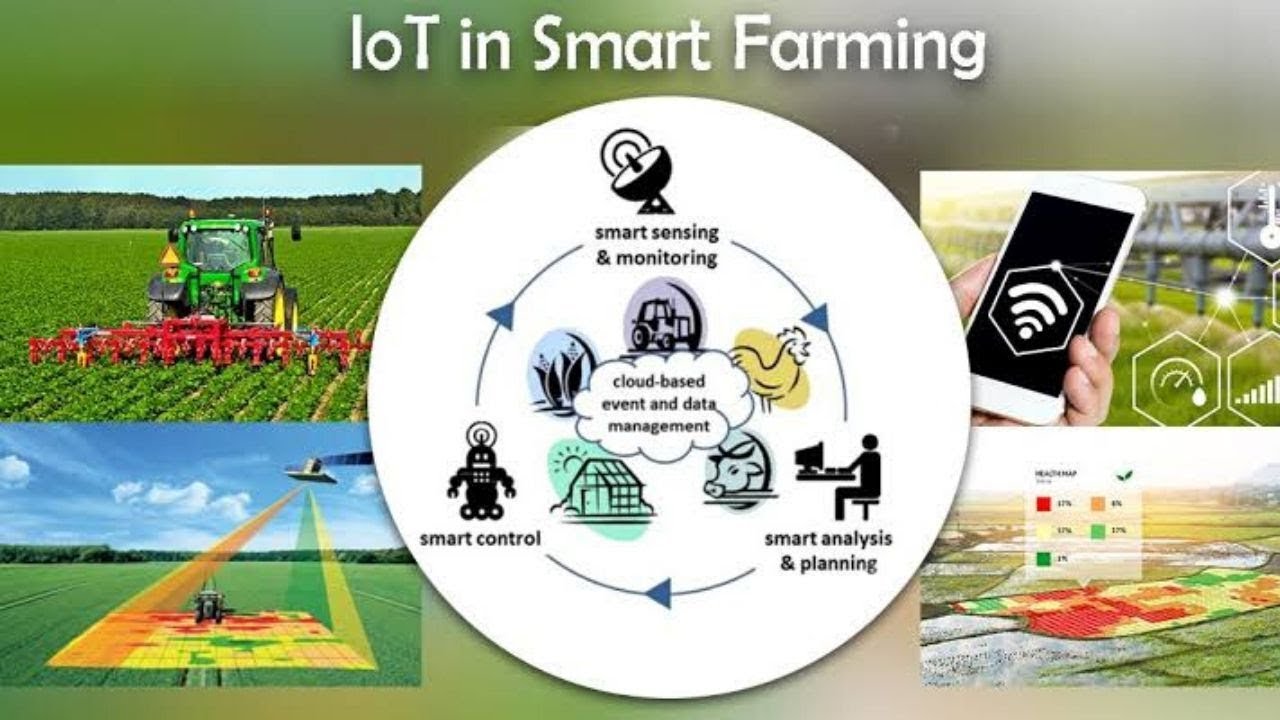In an era defined by rapid technological change, the Internet of Things (IoT) is emerging as a trans formative force in Oman’s Agriculture sector. By connecting sensors, data, and decision making tools, smart agriculture is taking root and bringing innovations to the country’s farms. This article explores how IoT applications are reshaping cultivation, livestock care, and resource optimisation and how Omani farmers are benefiting.
IoT Sensors for Real Time Soil and Climate Monitoring
Omani farms now use smart sensors that monitor soil moisture, temperature, pH levels, and climate conditions. These real time measurements help farmers avoid guessing and make precise irrigation decisions. As a result, farmers see improved crop yields, reduced water usage, and healthier soils.
By personalising the data, farmers can respond to the needs of each field. When a sensor alerts them that certain zones are drying out, they can take immediate action leading to savings in time, water, and effort.
Automated Irrigation Systems and Water Efficiency
Oman, being arid, values every drop of water. IoT driven automated irrigation systems use sensor data to activate drip or sprinkler systems only when needed. What was once manual and laborious is now seamless, efficient, and resource friendly.
Farmers report a sense of control and pride as water schedules that used to require tedious monitoring now happen automatically. The results are visible in crop health and cost savings.
Smart Greenhouses and Climate Control
IoT technology enables smart greenhouses that automatically adjust temperature, humidity, and ventilation to optimal levels. Controlled environments protect sensitive crops from extreme heat or cold, ensuring consistent growth throughout the year.
Farmers appreciate how these systems remove uncertainty. The greenhouse almost understands what the plants need, letting human caretakers focus on creativity and long term planning.

Livestock Monitoring Health Feed and Productivity
For livestock farmers, IoT brings real time tracking of animal health, location, and feeding patterns. Wearable sensors monitor behaviour, detect illness early, and optimise feed delivery. Farmers gain deeper understanding of each animal, fostering better welfare and productivity.
The emotional benefit is strong as farmers care deeply for their animals. IoT helps them nurture healthy herds and take action before small problems become serious.
Drone Based Surveillance and Crop Management
IoT equipped drones offer aerial surveys of farmland, identifying pest infestations, nutrient deficiencies, or drought stress. By spotting issues early, farmers can intervene selectively, reducing pesticide usage, boosting efficiency, and preserving the environment.
Drone imagery gives farmers a direct birds eye view of their land. This technology empowers them to solve problems before they escalate, offering greater clarity and control.
Data Analytics and Predictive Modelling
All IoT sensor data is gathered into platforms that provide analytics and predictive modelling. Farmers can forecast harvest timing, demand, and weather risks to adjust planting schedules. This data driven insight transforms farming into a strategic operation.
By translating raw data into simple reports, farmers experience the joy of clarity. Charts and alerts guide decisions, building confidence and control.
Better Resource Management and Sustainability
IoT applications help Oman’s agriculture industry use resources like water, fertiliser, and energy more efficiently. Precision application reduces waste, lowers costs, and minimises environmental impact. Smart irrigation, greenhouses, and drones all contribute to sustainable farming practices suited to Oman’s ecosystem.
The human benefit includes satisfaction in protecting the land while feeding the community. IoT makes farming both profitable and responsible.
Improved Crop Variety and Quality
Smart agriculture enables Omani farmers to experiment with high value crops suited to controlled environments. Precision moisture, nutrient, and climate control produce fruits and vegetables with superior taste and shelf life.
Farmers feel proud when their produce earns premium prices. The enhanced quality turns fields into success stories, proving how modern methods amplify traditional agriculture.

Remote Access and Farm Management Tools
Through mobile apps and cloud platforms, farmers gain remote access to their fields. They can view sensor data, adjust settings, receive alerts, and make decisions from anywhere even from home or while traveling.
This flexibility humanises agriculture, letting farmers spend more time with family while still managing operations. Farming becomes less about enduring long hours and more about intelligent oversight.
Economic Growth and Community Empowerment
Adopting IoT in smart agriculture brings economic uplift with higher yields, lower costs, and smoother supply chains. As more farms become efficient, local produce gains competitiveness in markets.
There is also a community effect as farmers share success stories, mentor peers, and build a culture of knowledge. IoT becomes a bridge between tradition and innovation.
Challenges and Human First Solutions
Implementation comes with challenges including connectivity in remote areas, adoption among farmers unfamiliar with technology, and upfront costs. Solutions focus on people through training programs, cooperative models, and government support.
Farmers express gratitude when technicians teach them step by step. This approach ensures technology becomes an ally rather than a barrier.
The Future Scalable IoT Ecosystems in Oman
Oman’s journey with smart agriculture is just beginning. Future growth includes integrated platforms linking farms, markets, logistics, and even consumer apps to track food origins. Collaborative research will foster innovation.
Farmers envision not just bigger harvests but healthier communities and resilient economies. IoT represents a promise for sustaining life.
Conclusion
Oman’s smart agriculture powered by IoT is transforming fields and livelihoods. From real time soil monitoring and automated irrigation to precision livestock care and drone surveillance, the benefits are tangible and human focused. Farmers gain control, reduce waste, increase income, and nurture the land.
By blending technology with personal care and local knowledge, Oman is cultivating a future where agriculture is smart, sustainable, and deeply rewarding for farmers, communities, and generations to come.
Do follow Gulf Magazine on Instagram.
Also Read – Role of Drones in Oman Boosts Infrastructure and Logistics Growth



